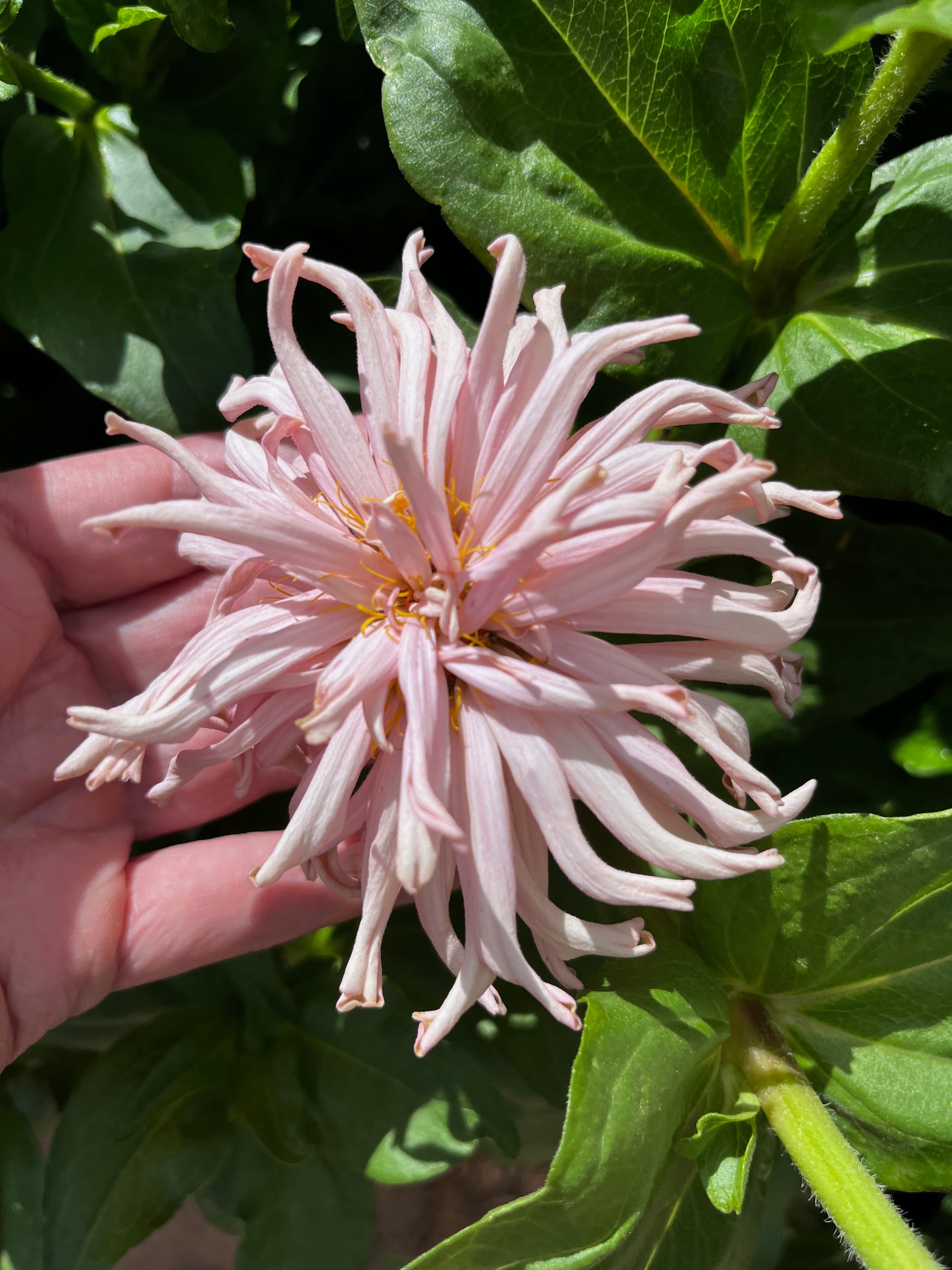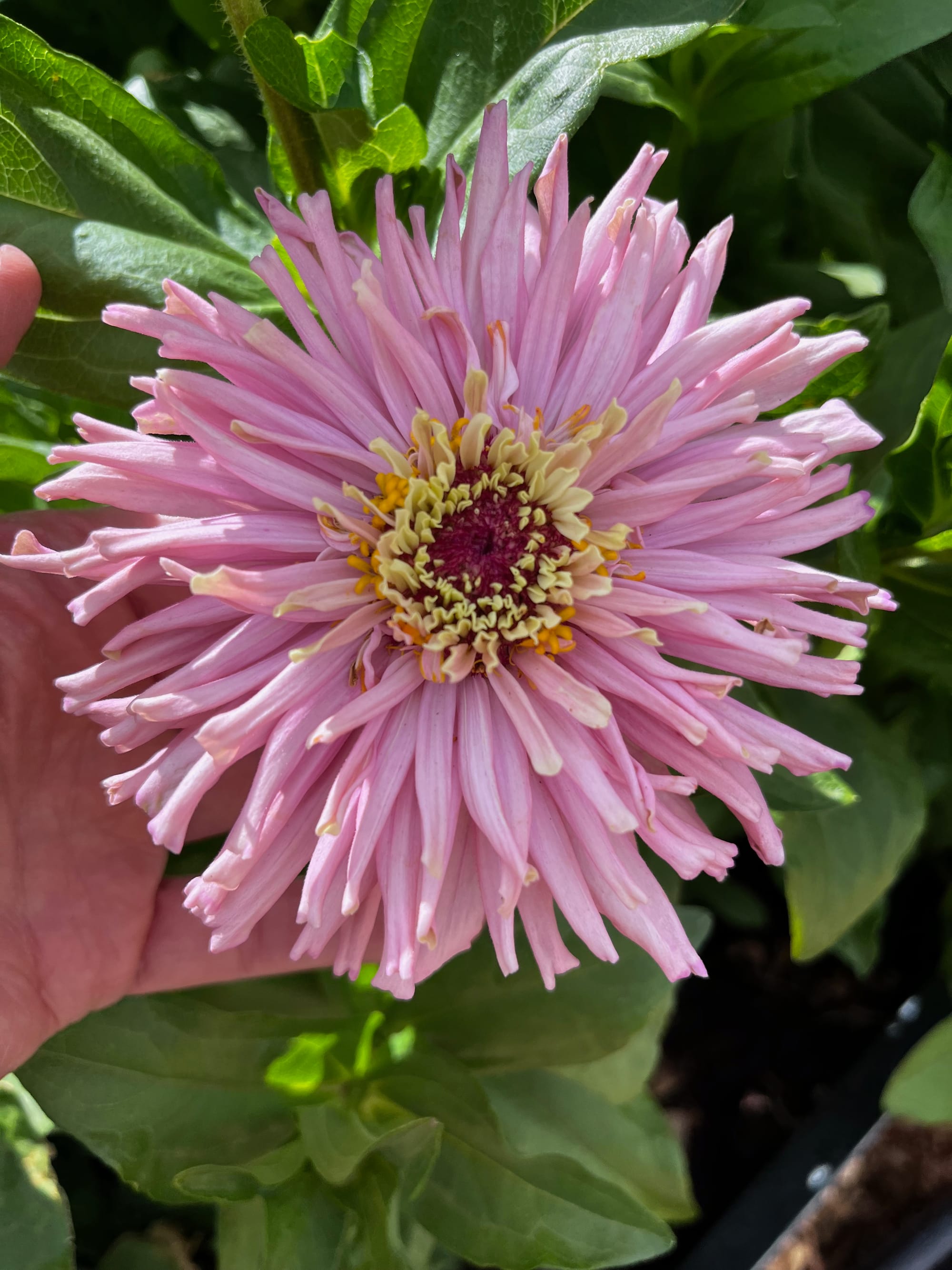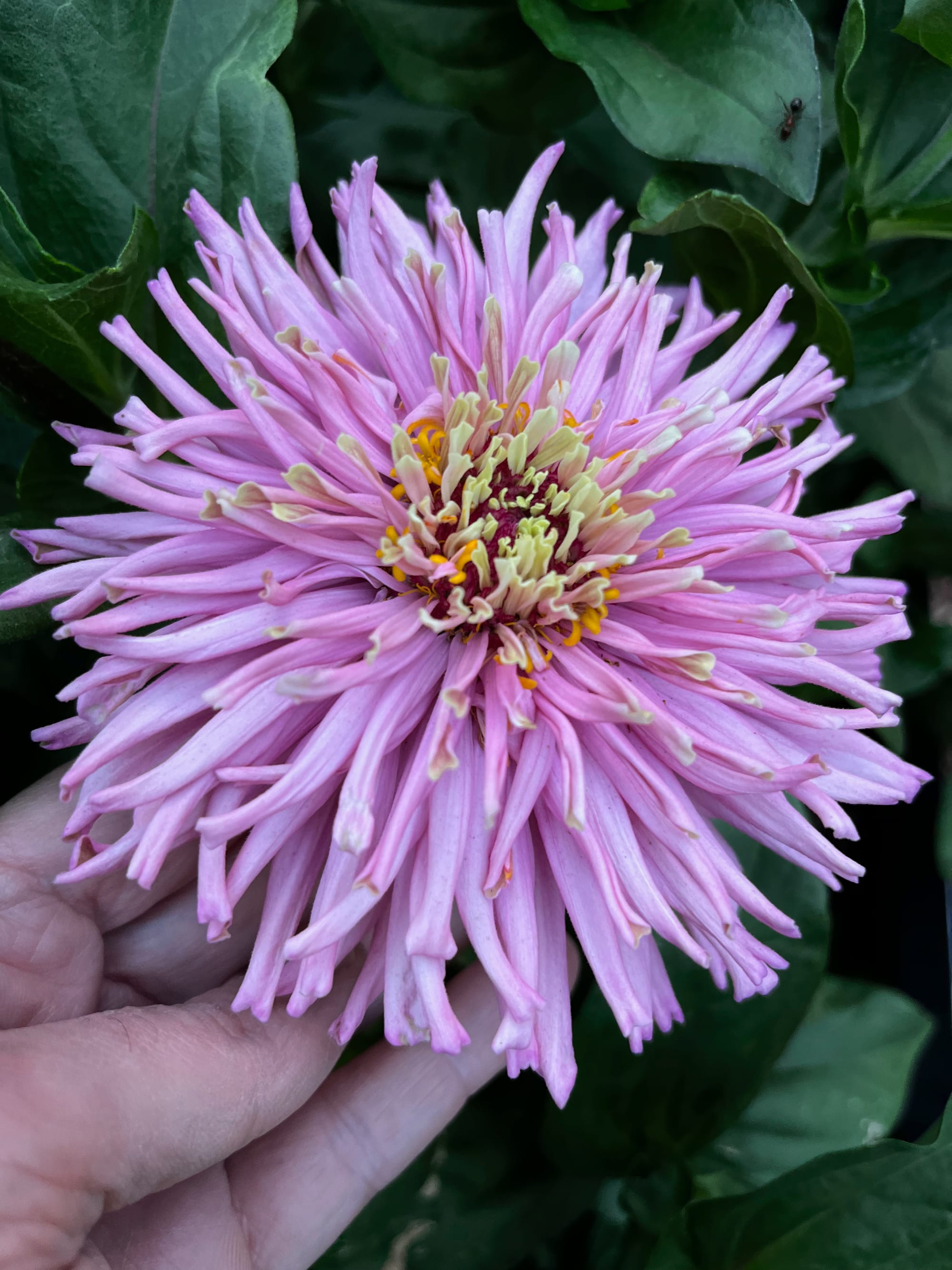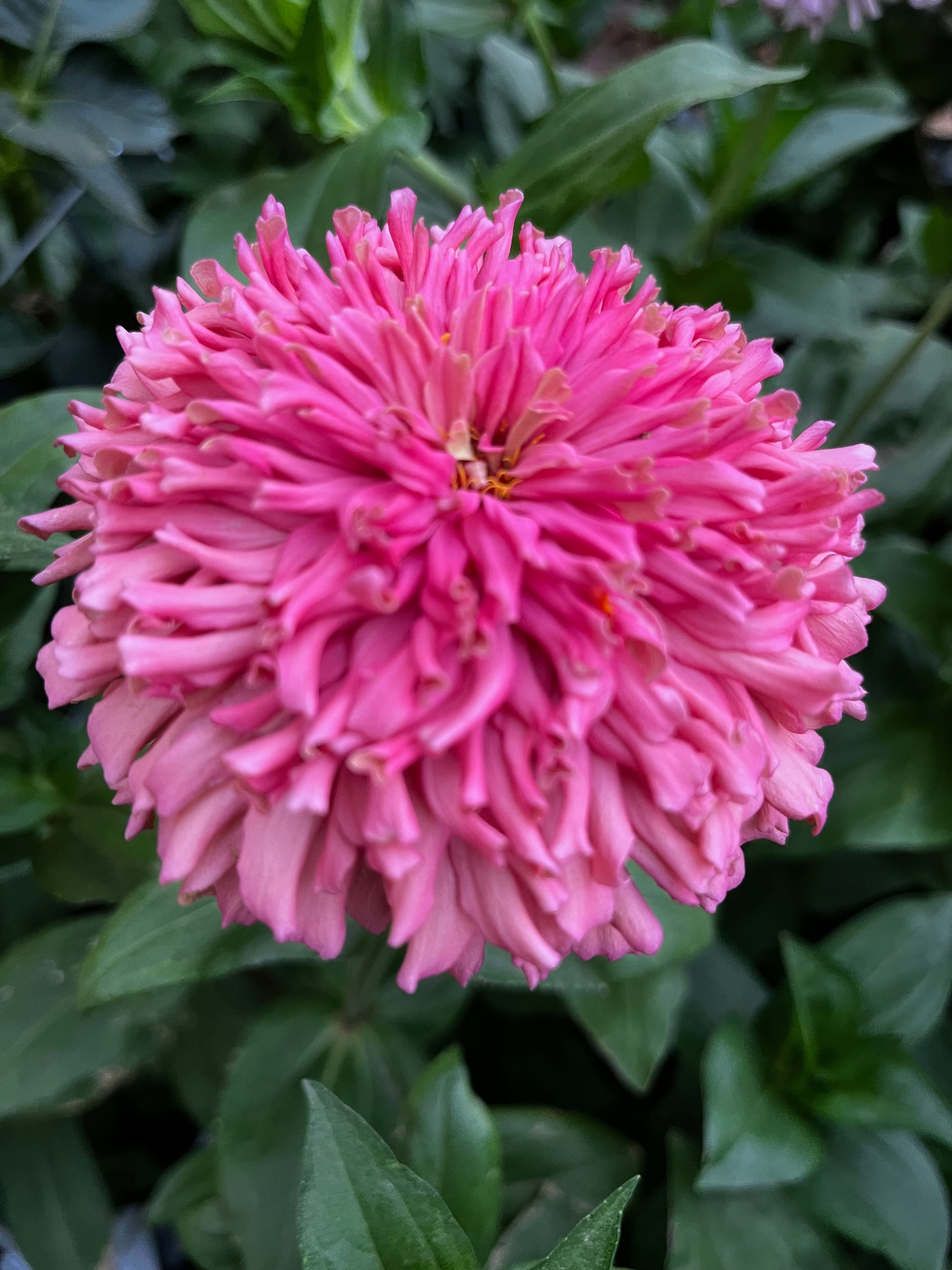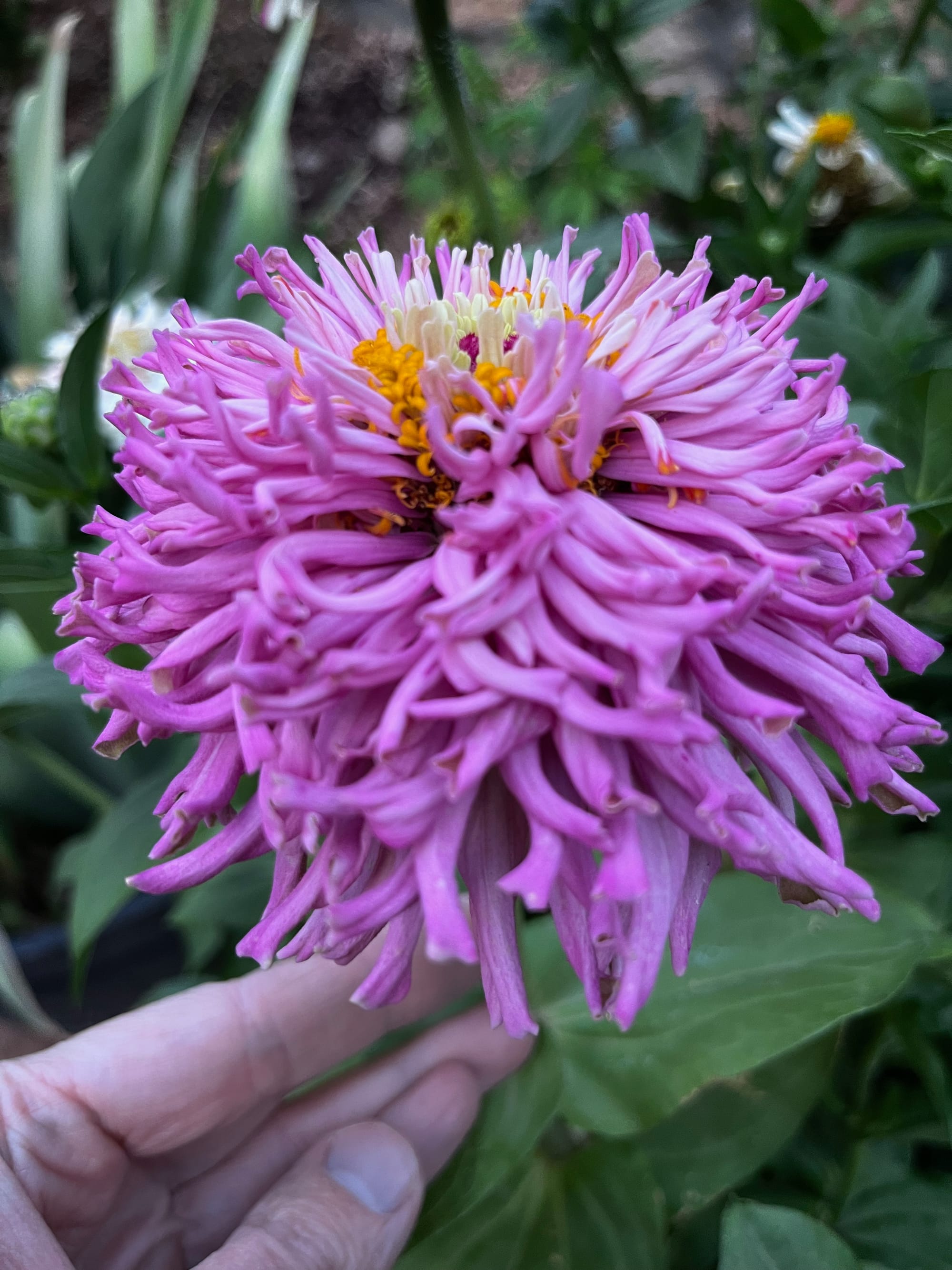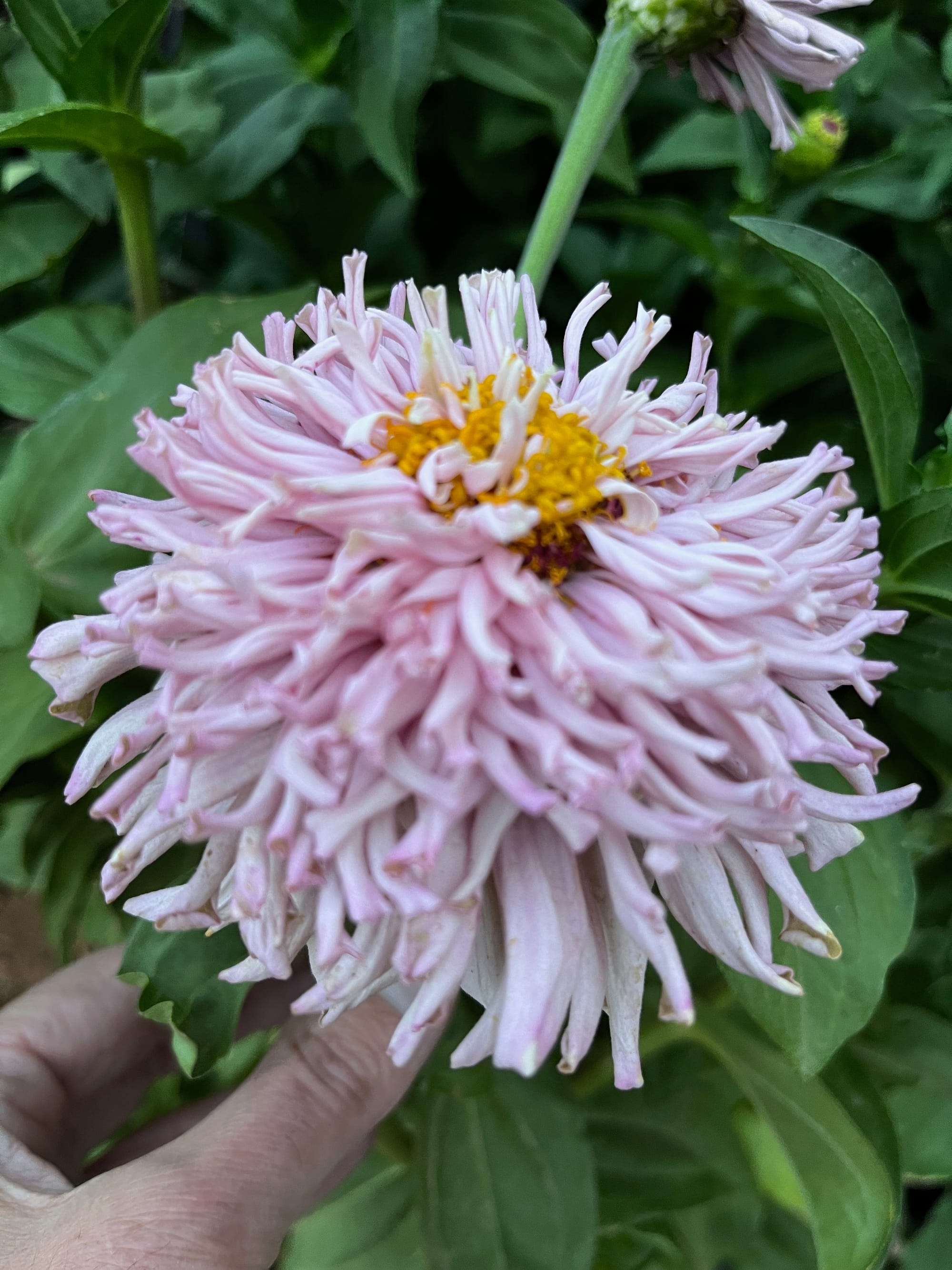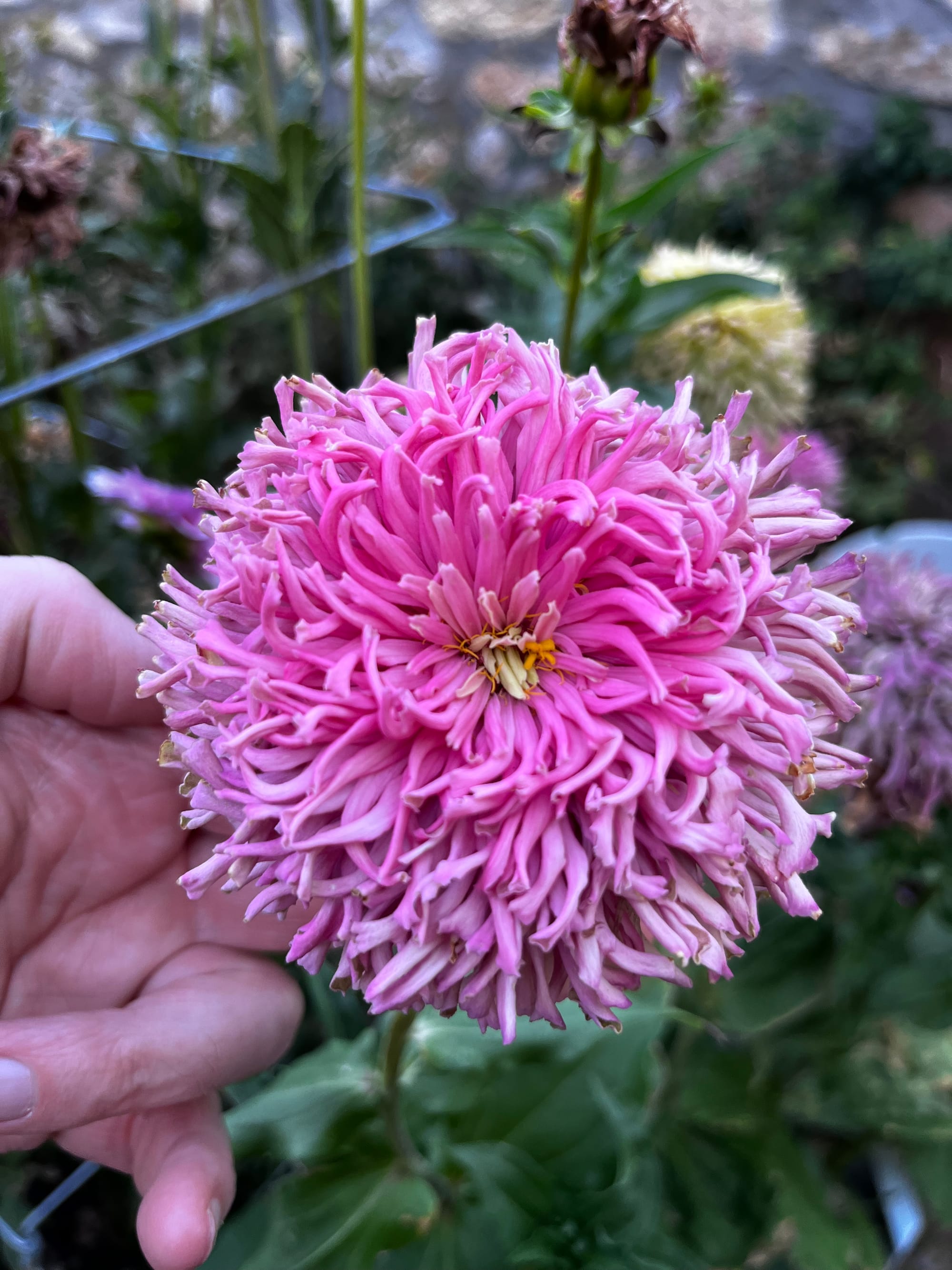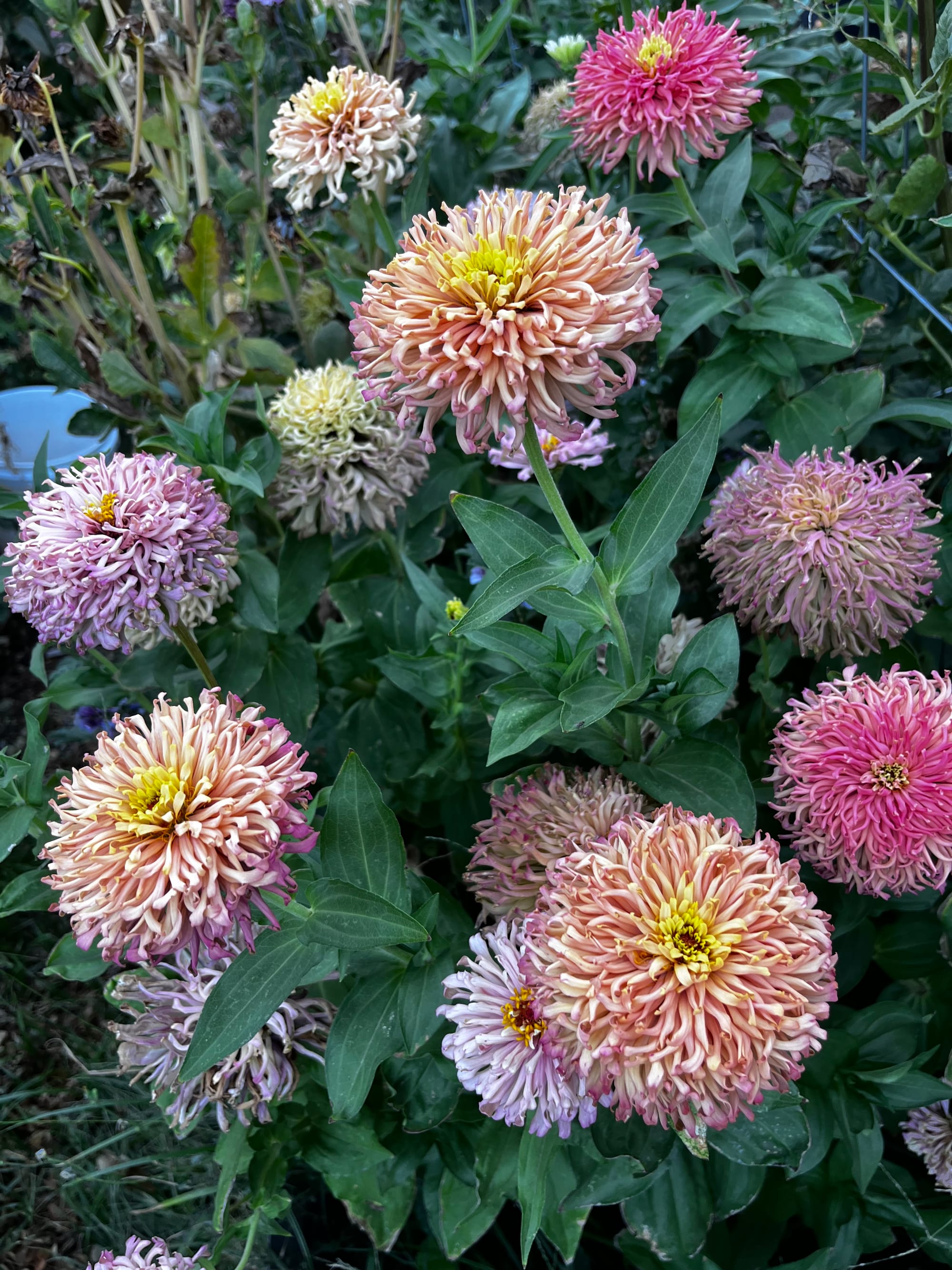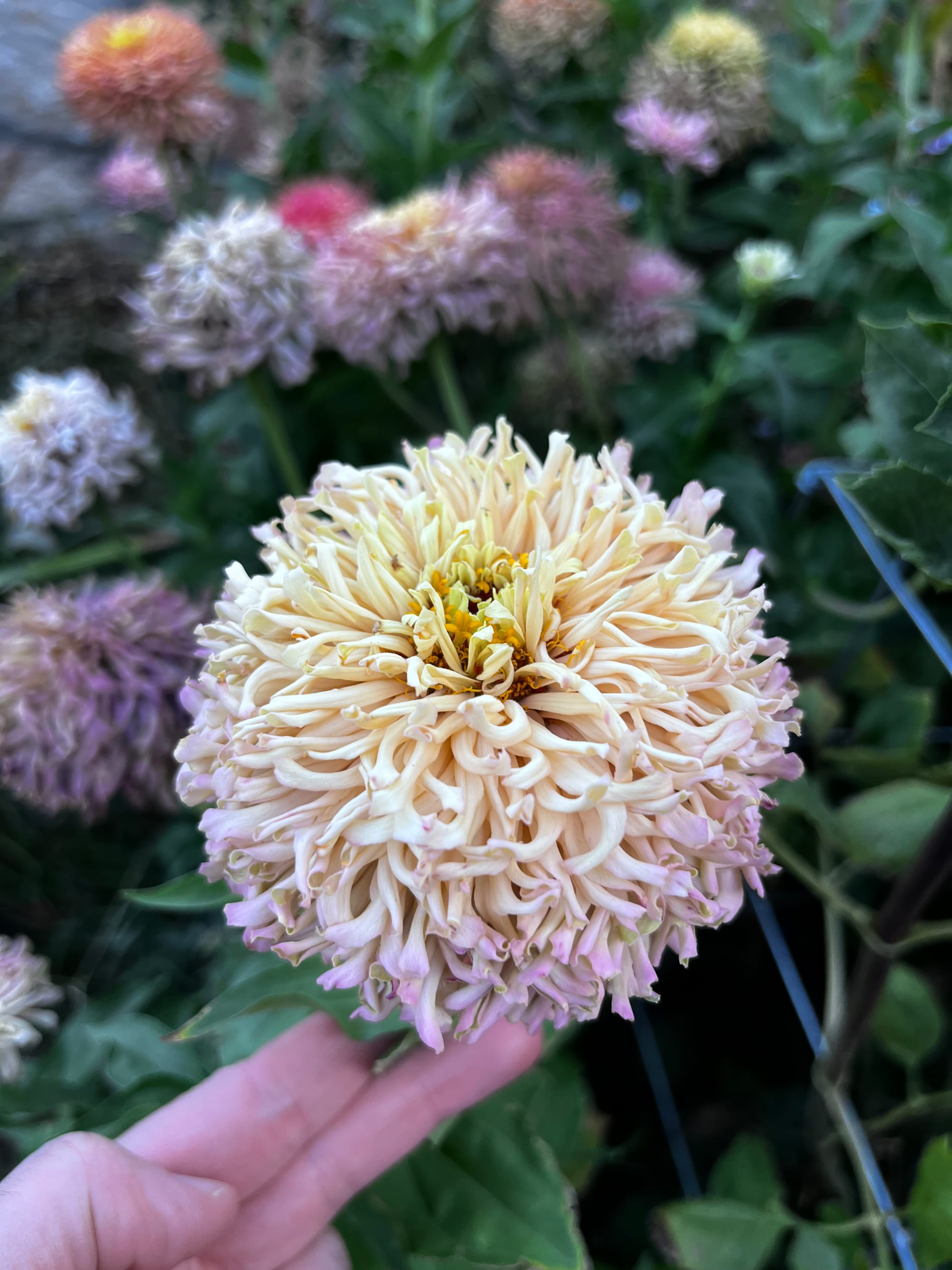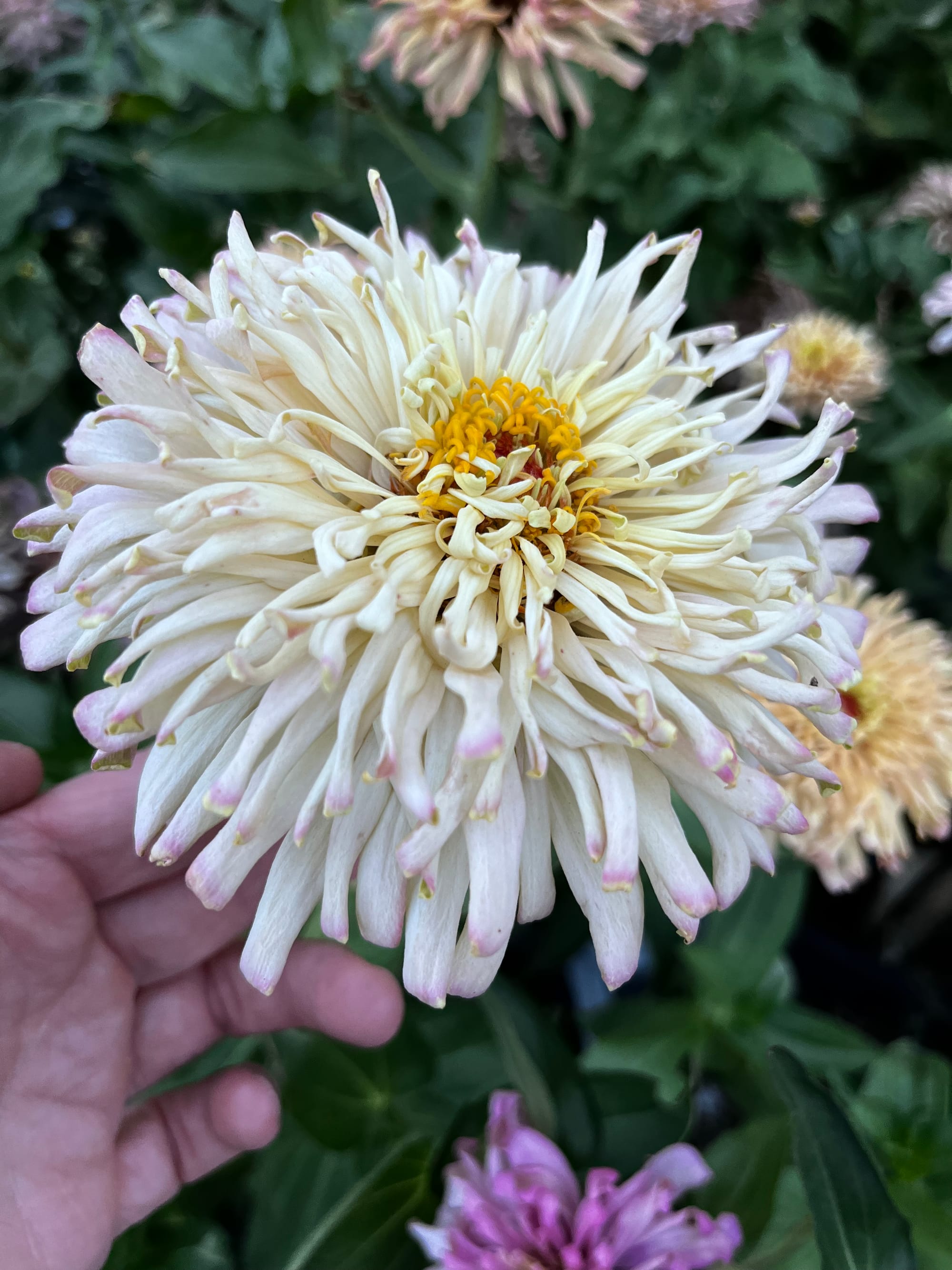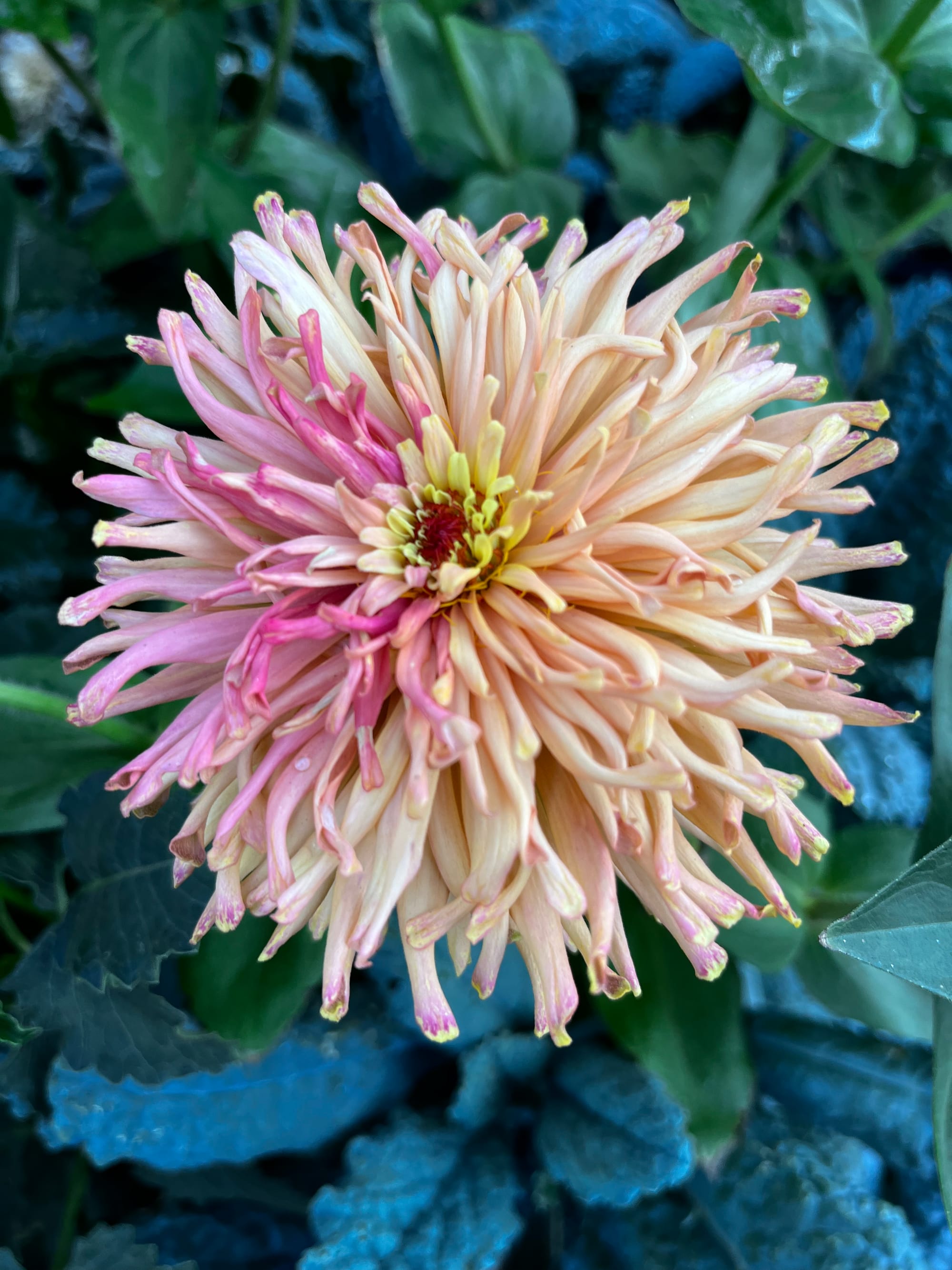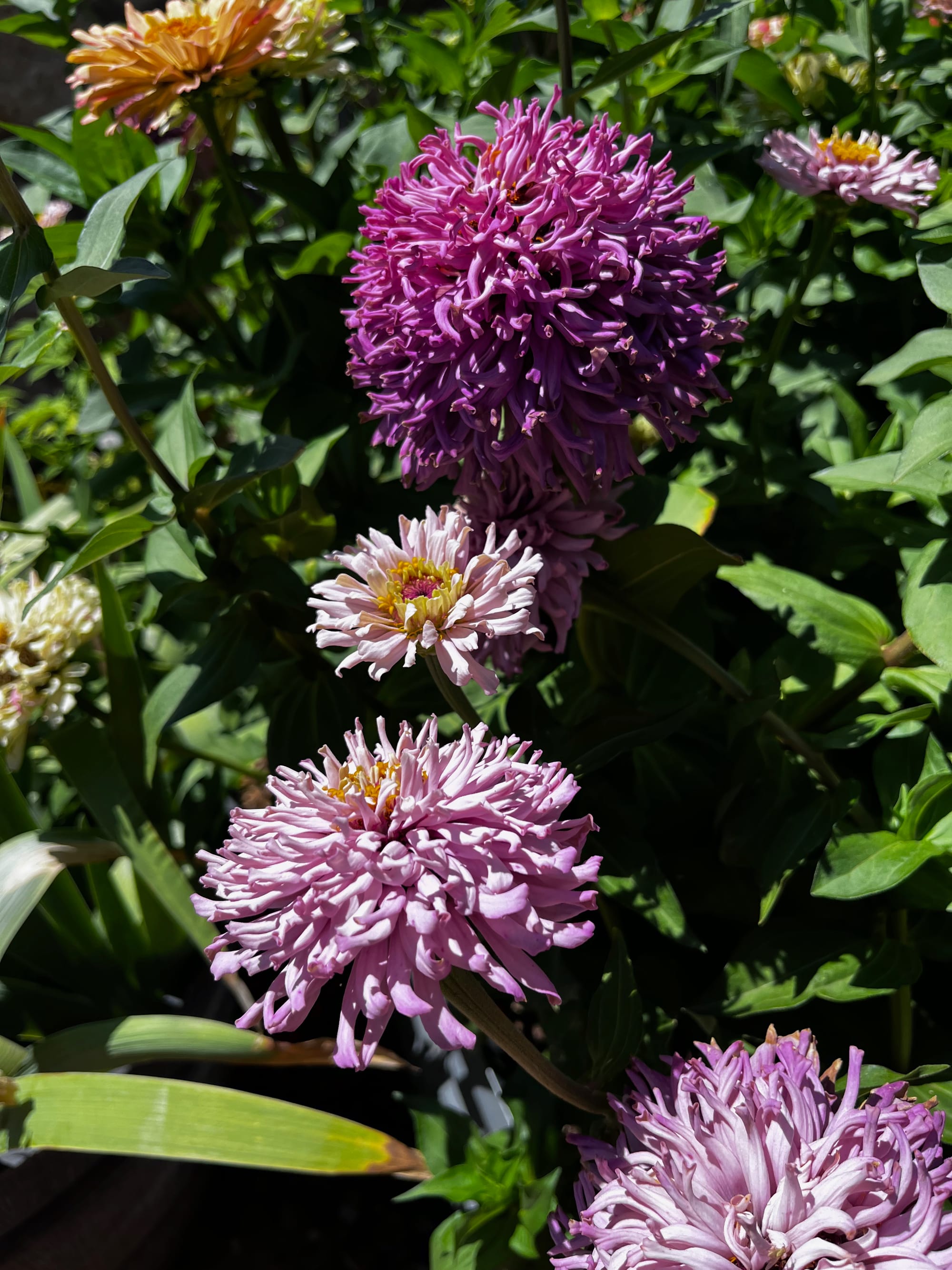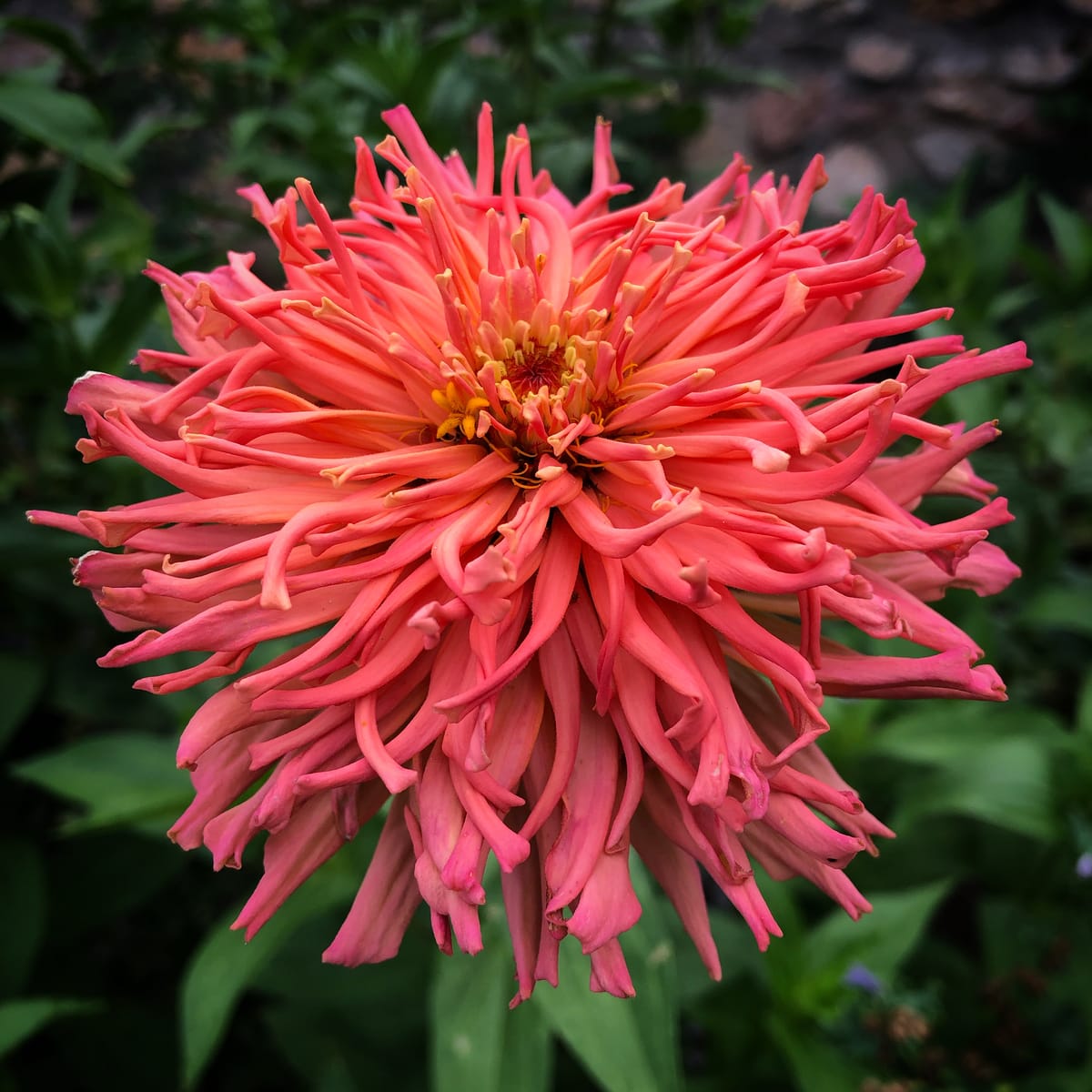

All of the photos in this article are zinnias from my garden. It's a very long story in terms of how I started with zinnias, and years later, have continued working with these flowers. Which many people might consider boring. I originally started growing zinnias because I was testing dozens of flowers in New Mexico to see what would successfully grow in that warmer, dry climate. I had a packet of white zinnia seeds that were possibly 7 - 8 years old, that I figured I had better plant now or it might be never. A few months later, I had some of the most beautiful flowers in the garden. There was still time left in the growing season, so I went searching all over the internet for special or otherwise unique varieties of zinnias. At the end of the year, I kept the seeds from my absolute favorites over everything. Then started them again the next year. I remember pulling out a lot of blooming flowers that weren't great, but kept the ones I did think were exceptional. At one point, I had some really spectacularly large flowers, but the stems weren't strong enough to support them well. So I then began taking seeds from the ones I like that also had stronger stems.
I continued picking my favorites over several years. And even kept a stockpile of extra seeds from each year to keep mixing back into the garden with all the newer ones. I really like the kookie, purple/salmon/pink/pastel cactus type zinnias that have emerged. Some of them look very exotic, like heirloom spider mums. While others are almost like cactus dahlias.
They often start the season with smaller, regular looking blooms. And I always panic thinking I've lost the traits. Then they pick up with bigger and better blooms with all the characteristics I love. Towards the end of the season, the flowers start getting smaller and may lose the cactus effect. I tend to tag plants of interest, allow the flowers to dry, then harvest them and throw the entire bloom (including some stem) into a marked grocery sack where they fully dry. I will then repeat the process again every year.
The key with all of this is to be brutal in tossing anything you don't like. Some years you might have three flowering plants you love, but that's fine. Enough seeds for the next year. If I see a non-cactus zinnia, or a bright color like orange or red, I normally toss those to avoid any cross pollination. Most of the time I let the bees do the work. But if I have a special trait I want to add, I will hand pollinate a zinnia. For example, I had some peppermint type zinnias that I used to pollinate a cactus zinna, and got peppermint cactus zinnias. And that's something you rarely see.
Now the idea is to make these your own. You'll want to invest in several packets of zinnia seeds up front that look like something you would enjoy. You might like large red blooms. You might like smaller zinnias for pots. You might like the Queen Lime color varieties. You might like the bi-color Swirls, Aztec, Whirligig, Zahara, Mazurkia or candy stripe varieties. Find what you like and as you grow them, see what you get. If you don't like anything, try something else. If you like everything, then keep a mix of everything. Even if you have a couple pots on your balcony, you can still have fun developing your own variety of zinnias. Zinnias can be grown in almost any climate, so they are not nearly as fussy as some flowers. That's why you always see zinnia seeds for sale at your local garden center.
